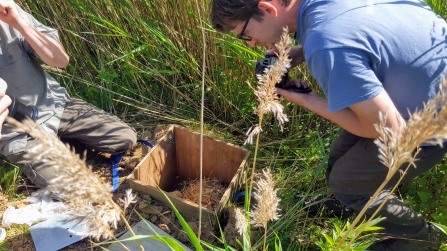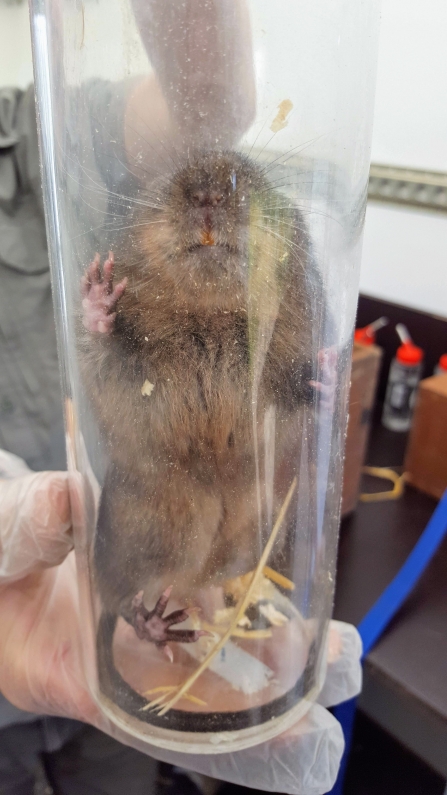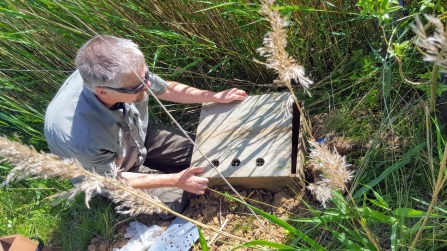In June, twenty endangered water voles were successfully released into Yorkshire Wildlife Trust’s Potteric Carr nature reserve; a stunning wetland habitat with pockets of woodland and wildflower meadows in Doncaster. The water voles were rescued from a collapsed road side ditch last autumn and carefully captured under licence from Natural England. Prior to their release at Potteric Carr they spent the winter in a special water vole hotel.
Potteric Carr’s mosaic of rich wetland made it the perfect choice for the release. New habitat, including a section of ditch, was created, and the site was landscaped and planted to provide deep water and burrowing banks for the voles’ shelter, cover and food. Potteric Carr’s new residents now live safely in the reedbeds, making rugby ball shaped nests out of old reed stems.




